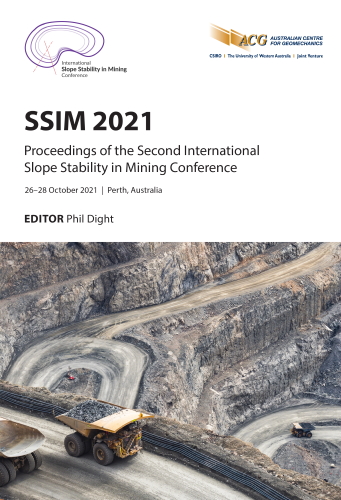A case study of Loy Yang Mine: geotechnical considerations when remediating heat affected coal batters

|
Authors: Narendranathan, S; Patel, N; Symonds, A |
DOI https://doi.org/10.36487/ACG_repo/2135_31
Cite As:
Narendranathan, S, Patel, N & Symonds, A 2021, 'A case study of Loy Yang Mine: geotechnical considerations when remediating heat affected coal batters', in PM Dight (ed.), SSIM 2021: Second International Slope Stability in Mining, Australian Centre for Geomechanics, Perth, pp. 485-498, https://doi.org/10.36487/ACG_repo/2135_31
Abstract:
Spontaneous combustion in the Latrobe Valley brown coal mines is a complex challenge that faces all mine operators in the region. If not adequately controlled, it can result in a number of issues including batter instability and loss of coal supply for the state’s energy supply. From a geotechnical perspective, the authors consider that there is little guidance information available for the treatment of spontaneous combustion in brown coal and seek to share their experiences amassed at a Latrobe Valley brown coal mine. The current owner and operator of a Latrobe Valley open cut brown coal mine has recently successfully completed rehabilitation of a ‘hot spot’ which occurred along the southern batters of the pit. The subject area of this study, within the mine, was observed to have started combusting in early 2010 and, more actively, in 2020, when steam vents appeared along existing geological features in the coal that remained dilated from a past episode of batter movement (i.e. a batter slump) which occurred after a storm event in 2007. This paper presents a case study of the geotechnical slope stability assessments undertaken as part of the hot spot remediation. Owing to the criticality of this infrastructure carrying slope domain, which, if adversely affected, had the potential to disrupt operations at the largest coal mine in Victoria, the authors espoused a risk-based approach to the stability assessments using the Mine Geotechnical Risk Index approach, after Narendranathan & Cheng (2019).
Keywords: rehabilitation, spontaneous combustion, brown coal, open pit, mining, slope stability, risk
References:
Abu-Zreig, M, Al-Akhras, N & Attom, M 2001, ‘Influence of heat treatment on the behavior of clayey soils’, Applied Clay Science, vol. 20, issue 3, pp. 129–135.
Basma, A, Al-Homoud, A & Al-Tabari, E 1994, ‘Effects of methods of drying on the engineering behavior of clays’, Applied Clay Science, vol. 9, issue 3, pp. 151–164.
Lilly, P 2000, The Minimum Total Cost Approach to Optimise Pit Slope Design, Western Australia School of Mines, Kalgoorlie.
Narendranathan, S 2009, ‘Fundamentals of probabilistic slope design and its use in pit optimization’, Proceedings of the 43rd US Rock Mechanics Symposium & 4th US–Canada Rock Mechanics Symposium, American Rock Mechanics Association, Alexandria.
Narendranathan, S & Cheng, M 2019, ‘Development of the Mine Geotechnical Risk Index’, in J Wesseloo (ed.), MGR 2019: Proceedings of the First International Conference on Mining Geomechanical Risk, Australian Centre for Geomechanics, Perth, pp. 461–474.
Read, J & Stacey, P 2009, Guidelines for Open Pit Slope Design, CSIRO Publishing, Clayton.
Rocscience Inc. 2020a, Slide2, version 9.010, computer software, www.rocscience.com/software/slide2
Rocscience Inc. 2020b, SWedge, version 7.009, computer software, www.rocscience.com/software/swedge
Rocscience Inc. 2017, DIPS, version 7.011, computer software, www.rocscience.com/software/dips
© Copyright 2025, Australian Centre for Geomechanics (ACG), The University of Western Australia. All rights reserved.
View copyright/legal information
Please direct any queries or error reports to repository-acg@uwa.edu.au
View copyright/legal information
Please direct any queries or error reports to repository-acg@uwa.edu.au